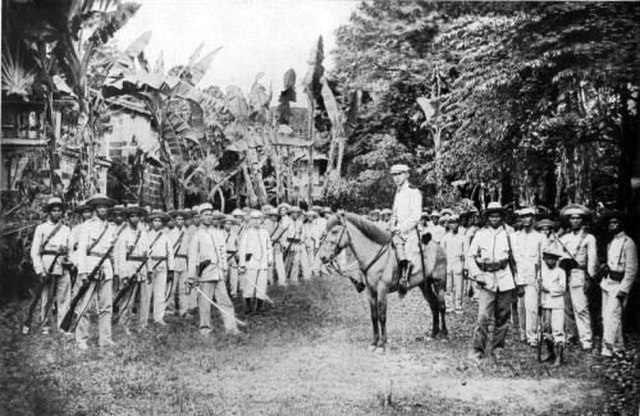The Balangiga massacre was an incident during the latter stages of the Philippine–American War in which the residents of the town of Balangiga on the island of Samar conducted a surprise attack on an occupying unit of the U.S. 9th Infantry, killing 54. The incident is also known as the Balangiga Encounter, Balangiga Incident, or Balangiga Conflict, Some Filipino historians have asserted that the term of Balangiga Massacre more appropriately refers to the March across Samar, a subsequent action on the island that resulted in an estimated 2,000 Filipino civilians killed and over 200 homes burned, which they see as retaliation by American soldiers.
Members of Company C, 9th US Infantry Regiment posing with Mayor Valeriano Abanador and another town official
Battle of Balangiga monument
Battle of Balangiga memorial marker
Statue of Valeriano Abanador, Balangiga police chief during the Battle of Balangiga
The Philippine–American War, known alternatively as the Philippine Insurrection, Filipino–American War, or Tagalog Insurgency, was fought between the First Philippine Republic and the United States from February 4, 1899, until July 2, 1902. Tensions arose after the United States annexed the Philippines under the Treaty of Paris at the conclusion of the Spanish–American War rather than acknowledging the Philippines' declaration of independence. The war can be seen as a continuation of the Philippine struggle for independence that began in 1896 with the Philippine Revolution against Spanish rule.
Image: Manila 646 1899
Image: Gregorio del Pilar and his troops, around 1898
Image: Battle of Quingua
Image: Americans guarding Pasig River bridge, 1898








